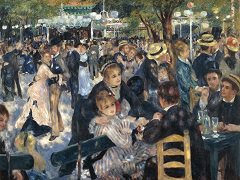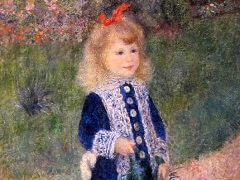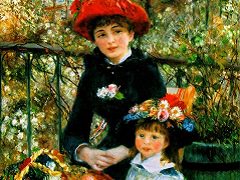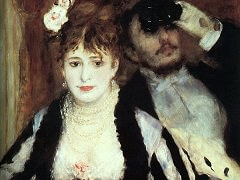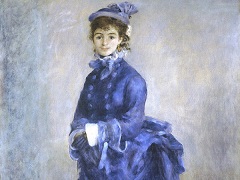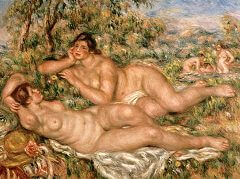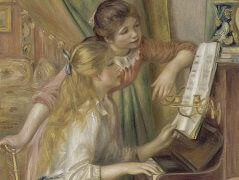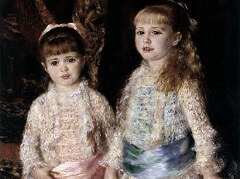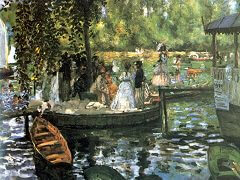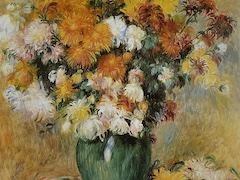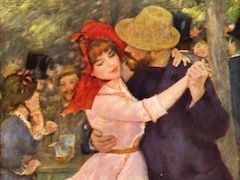Fruits of the Midi - by Pierre-Auguste Renoir

This still life is at once like and unlike what we expect of Renoir; it is full of surprises. A certain ruggedness of brushing, bulk, and drawing suggests the influence of Paul Cezanne; it may even have been painted while Renoir was visiting his friend at L'Estaque. But the profusion - there are no fewer than twenty-four fruits of many different varieties - is Renoir's and not Cezanne's. So, too, are the textural interest, the abundance of color, the preoccupation with the look and feel of things; the sustained interest in the variety of highlights is Renoir's, and so is the discovery of subtle decorative qualities of the subject.
The scalloped ellipse of the dish is the most obvious statement of a decorative theme. As the eye goes around the outermost edges of the whole still-life group, it describes a larger variant of this theme. Inside the cluster of fruit, and in single objects as well - the peppers, for instance - further echoes are present.
Opposed to this development on the left side of the canvas is the color arrangement. The bright reds are mainly on the right side, and with the peppers as the corners they form an almost perfect equilateral triangle. The dark purple-blues, the yellows and greens are reserved for the other side of the composition; but they are picked up by the fruits in the center of the triangle of red, as the red is echoed by the two globes at the left. Similarly, the purples are introduced into the pomegranates and in the cast shadows (which are quite unusual for Renoir at this period, again suggesting Cezanne). All the major colors are shot through the upper part of the background, and delicate nuances occur again in the tablecloth.
Other themes are in evidence: the globular, which is varied from the sphere to the egg shape; the elongated ellipses of the leaves; and the irregular, jerky movement of the stems, a variant on the white edge of the dish and a foil for the bursting fullness of the fruit.


